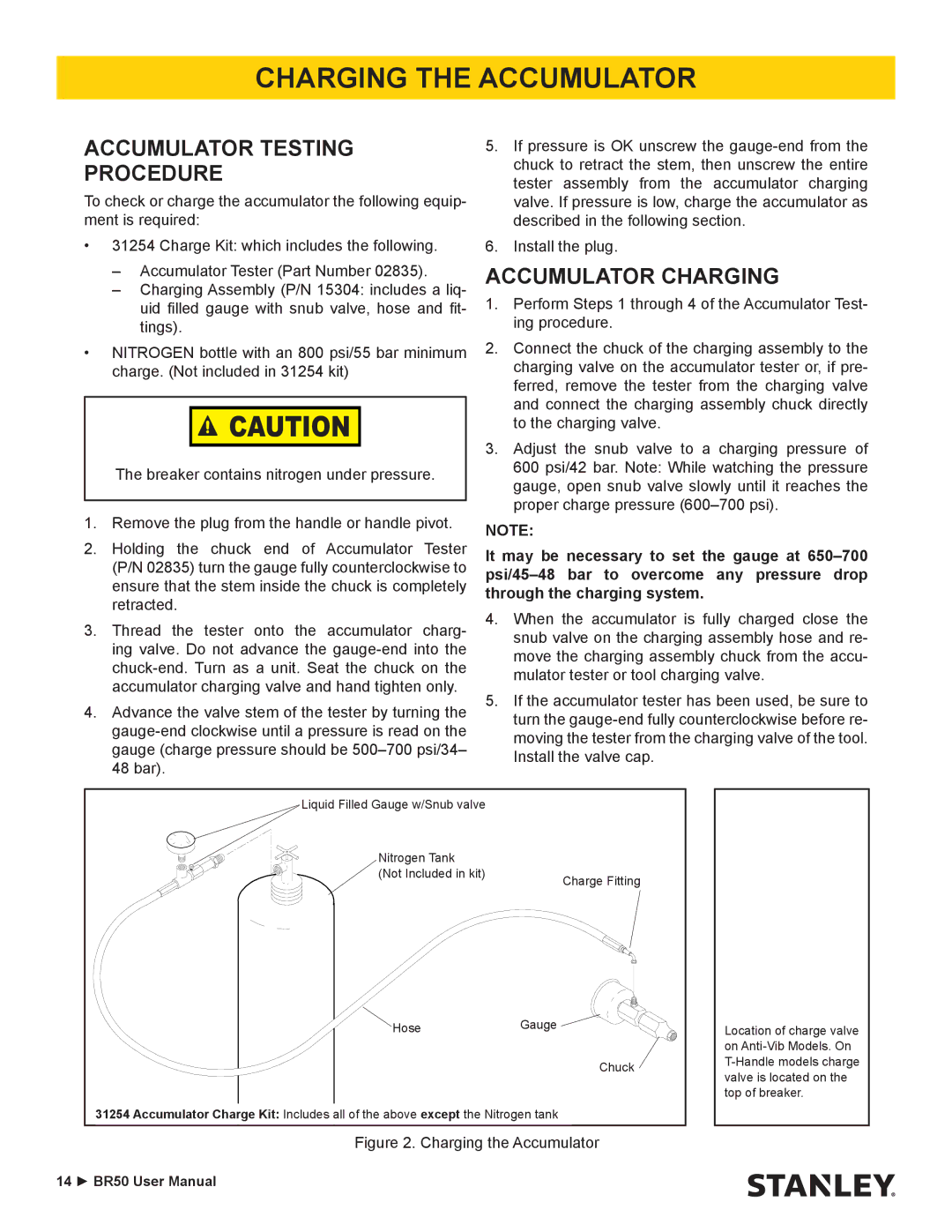BR50 specifications
The Stanley Black & Decker BR50 is an exceptional addition to the company's renowned lineup of power tools and outdoor equipment. Designed for professionals and homeowners alike, this versatile and robust tool promises reliable performance, ease of use, and an array of advanced features tailored to meet various needs.At the core of the BR50 is its powerful motor, delivering impressive performance for a variety of applications. The high-torque motor ensures durability and longevity, making it suitable for demanding tasks such as heavy-duty cutting, drilling, or work on tough materials. Its compact design allows for maneuverability, enabling users to navigate tight spaces effortlessly.
One of the standout features of the BR50 is its innovative technology interface, which includes an easy-to-read digital display. This user-friendly feature provides real-time information regarding battery life, speed settings, and operational feedback, allowing users to stay informed during their work sessions. In addition, the BR50 integrates advanced battery technology, promoting extended run times and reduced charging periods, ensuring that the tool is always ready for action when needed.
The BR50 is engineered with ergonomics in mind. It boasts a comfortable grip and lightweight design, reducing user fatigue during extended use. The tool’s balanced weight distribution further enhances accessibility and control. Additionally, the BR50 includes vibration-reduction technology, which lessens the impact on the user, providing a more comfortable working experience.
Safety is a priority with the BR50, which features a built-in safety lock to prevent accidental activation, giving users peace of mind during operation. The carbon brush technology helps maintain efficiency and reduces the need for frequent maintenance, thereby extending the tool's overall lifespan.
Compatibility with a wide range of accessories is another advantage of the Stanley Black & Decker BR50. The tool can be customized with various attachments, ensuring it meets diverse project requirements, from woodworking to metalworking.
In summary, the Stanley Black & Decker BR50 is a multifaceted tool that combines power, advanced technology, and user-focused design. Whether tackling DIY projects or professional tasks, the BR50 stands out with its reliable performance and thoughtful features, making it a must-have for anyone looking to invest in a high-quality tool.

